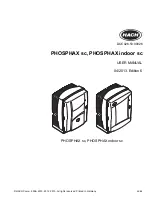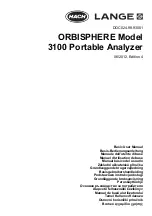
© PCE Instruments
12
13.2
Preparation of the sample
2 measurements of the centre of each piece of fruit (one per side) should be made. The mean
value will then be calculated from both measurements.
Choose the measuring spots and remove the skin at the selected spots. The peeled area should
be a bit larger than the diameter of the penetration tip. The penetration tip to be selected mainly
depends on the type of fruit and the degree of ripeness. The smaller tips are normally used for
relatively firm or small samples. The larger tips, on the other hand, are used for softer and larger
samples. It is very important to get reproducible and comparable readings. However, it is also
important that the samples have the same temperature. The temperature is decisive for the
firmness of fruit, i. e. the higher the temperature, the softer the fruit will be.
13.3
Important information about the measurement
After preparing the sample and selecting the right tip, you can measure the firmness at both
measuring spots. To get a correct firmness value, the following must be observed:
During the measurement, firmly hold the sample on a flat and hard surface such as a table or a
plate to make sure the force can be exerted correctly.
Make sure that the head of the meter, the penetration tip and the sample point at the same
direction during the complete measurement. Avoid movement or turning of the measuring tip
during the measurement. Always apply pressure perpendicularly. Different measuring angles are
not allowed.
Apply SLOW AND EQUAL pressure with the penetration tip up to the recess that is marked on
the tip. Irregular pressure can falsify the measurement. The complete procedure should take
approx. 2 seconds.



































